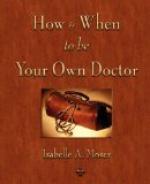There are many many common diseases that the medical profession does not see as being caused by vitamin deficiencies. Senility and many mental disorders fall in this category. Many old people live on extremely deficient diets comprised largely of devitalized starches, sugars, and fats, partly because many do not have good enough teeth to chew vegetables and other high roughage foods, and they do not have the energy it takes to prepare more nourishing foods. Virtually all old people have deficiency diseases. As vital force inevitably declines with age, the quantity and quality of digestive enzymes decreases, then the ability to breakdown and extract soluble nutrients from food is diminished, frequently leading to serious deficiencies. These deficiencies are inevitably misdiagnosed as disease and as aging.
Suppose a body needs 30 milligrams a day of niacin to not develop pellagra, but to be fully healthy, needs 500 milligrams daily. If that body receives 50 milligrams per day from a vitamin pill, to the medical doctor it could not possibly be deficient in this vitamin. However, over time, the insidious sub-clinical deficiency may degrade some other system and produce a different disease, such as colitis. But the medical doctor sees no relationship. Let me give you an actual example. Medical researchers studying vitamin B5 or pantothenic acid noticed that it could, in what seemed to be megadoses (compared to the minimum daily requirement) largely reverse certain degenerative effects of aging. These researchers were measuring endurance in rats as it decreased through the aging process. How they made this measurement may appear to some readers to be heartless, but the best way to gauge the endurance of a rat is to toss it into a five gallon bucket of cold water and see how long it swims before it drowns. Under these conditions, the researcher can be absolutely confident that the rat does its very best to stay alive.
Young healthy rats can swim for 45 minutes in 50 degree Fahrenheit water before drowning. Old rats can only last about 15 minutes. And old rats swim differently, less efficiently, with their lower bodies more or less vertical, sort of dog paddling. But when old rats were fed pantothenic acid at a very high dose for a few weeks before the test, they swam 45 minutes too. And swam more efficiently, like the young rats did. More interestingly, their coats changed color (the gray went away) and improved in texture; they began to appear like young rats. And the rats on megadoses of B5 lived lot longer—25 to 33 percent longer than rats not on large doses of B5. Does that mean “megadoses” of B5 have an unknown drug-like effect? Or does that mean the real nutritional requirement for B5 is a lot higher than most people think? I believe the second choice is correct. To give you an idea of how much B5 the old rats were given in human terms, the FDA says the minimum daily requirement for B5 is about 10 milligrams but if humans took as much B5 as the rats, they would take about 750 milligrams per day. Incidentally, I figure I am as worthy as any lab rat and take over 500 milligrams daily.




